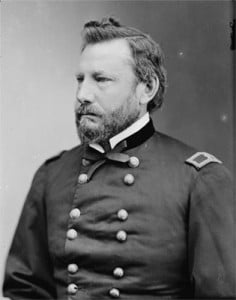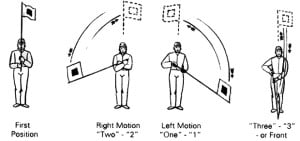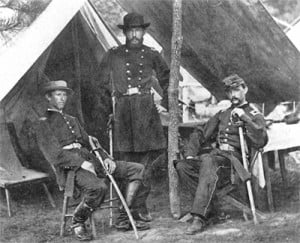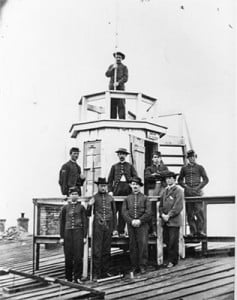Wig-wag flags sent messages | Albert Myer | Signal Corps

Just before the Civil War, Albert Myer, an obscure telegrapher who became an Army doctor, combined his experience in both fields to invent a means of communicating by waving flags to troops. His effort spawned the Army’s Signal Corps.
Today, the Signal Corps sends messages by modern means. But Myer knew nothing of cellphones, emails and texting to reach units strung out across a battlefield. But he did know how to “speak” with deaf people and saw a way to apply it to warfare.
Myer’s dissertation for his medical degree was titled “A New Sign Language for Deaf Mutes.” In “Getting the Message Through,” Rebecca Robbins Raines’ history of the Signal Corps, she writes that Myer “transformed [telegraph] code into a means of personal communication by which words could be spelled by tapping them out upon a person’s cheek or hand.”

Stationed in Texas in the mid-1850s as a medical officer, Myer “converted this sign language into the flag and torch signaling system that has become known as ‘wig-wag,’” writes Raines.
Ironically, given his later role as president of the Confederacy, Jefferson Davis was the first person Myer approached about adopting his system. Davis, then U.S. Secretary of War, said, “In the absence of more full information no opinion can be formed of the plan proposed.”

Ever persistent, Myer eventually won the notice of the U.S. Senate’s Committee on Military Affairs. When both houses of Congress passed a bill in 1860 and President James Buchanan signed it, the Signal Corps was born.
The Civil War would break out less than a year later. By the end of 1862, the Signal Corps consisted of 300 officers and 900 men. The San Francisco Bulletin informed readers that “the colors of the flags used are modified by the nature of the background. White with a black centre and red with a white centre are used against a dark background, and black with a white centre against a clear sky….At night a…torch is substituted for the flag.”

The messages conveyed by waving the flags could direct the movement of troops or guide more accurate artillery fire. Commenting on the members of the corps, another newspaper remarked that “signal duty…is by far the most dangerous in the whole service” because enemy batteries zoned in on the flags.
Davis, once dubious, would add signal units to the Confederacy’s army, finally acknowledging Myer’s flag-related contribution to warfare.

Do you have Civil War signal flags for sale? If so what is the price?
Hi Marty, we offer many civil war era flags and anything that isn’t already made, we can make up as a custom flag. Shop our Civil War flags
I think I have a civil war signal flag. Is there a email I can send a picture
Hi! Yes, you can send to newsletter@gettysburgflag.com
We apologize for the delay in response.
Hi! Yes, you can send to newsletter@gettysburgflag.com